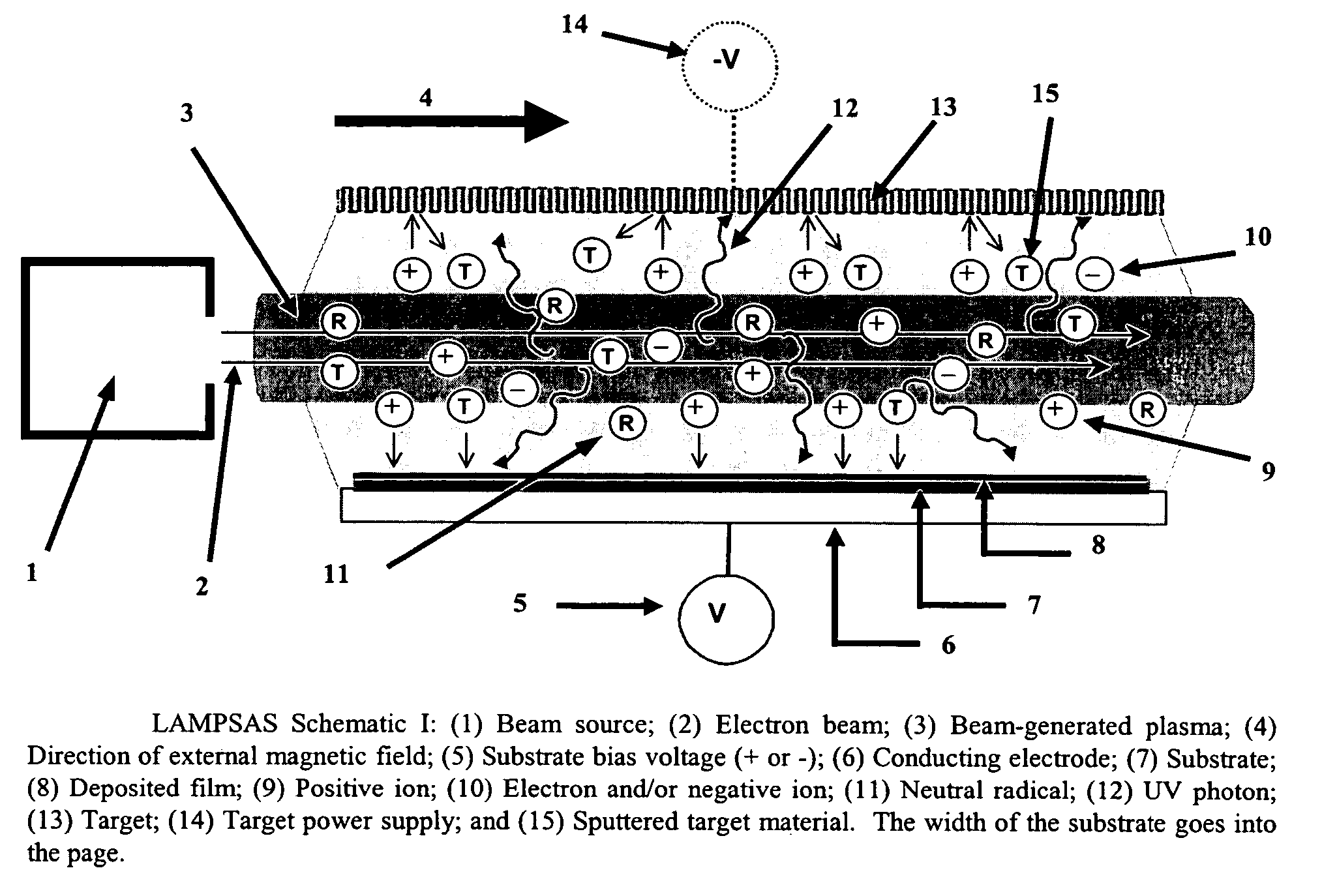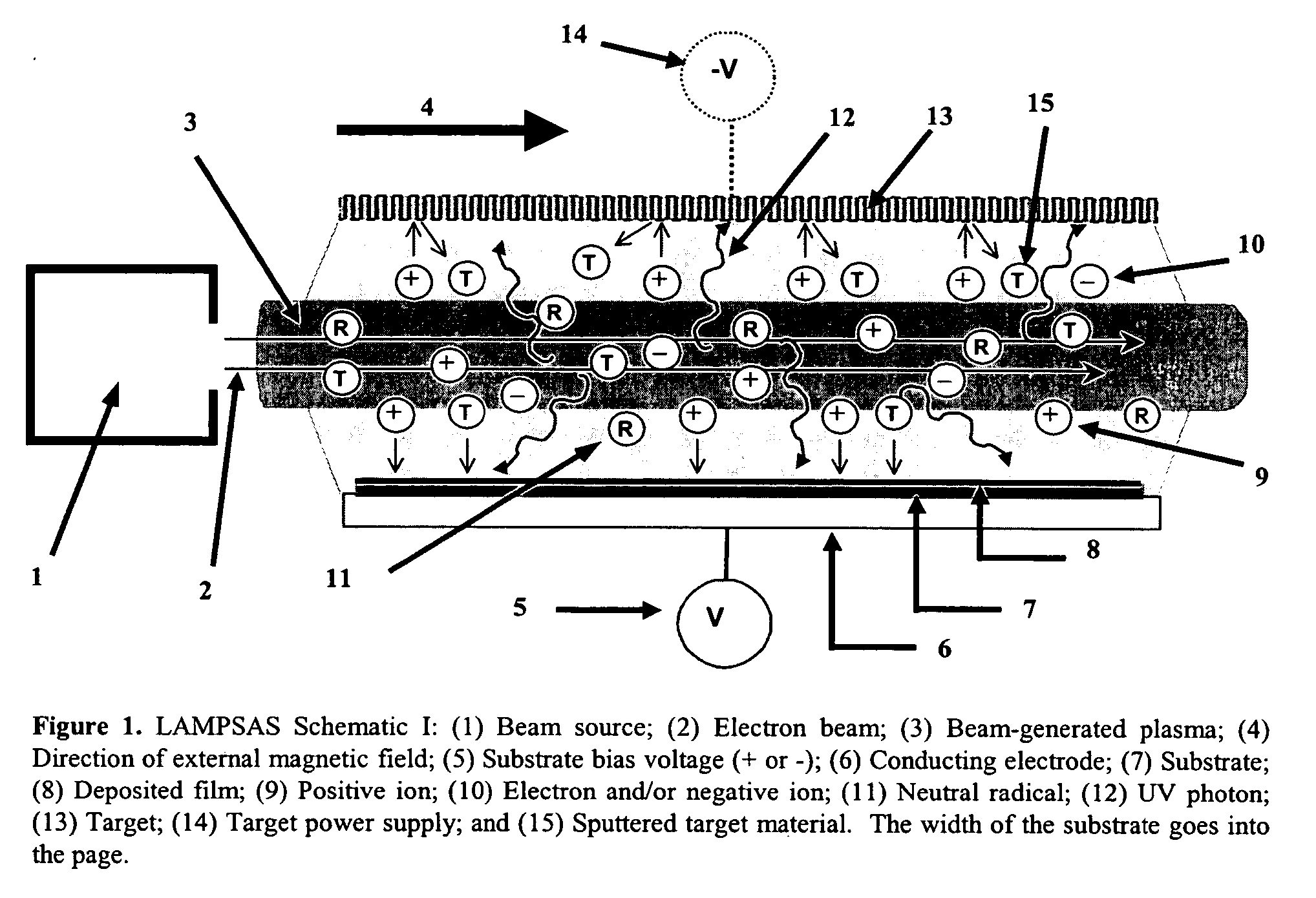Large area metallization pretreatment and surface activation system
a technology of activation system and metallization pretreatment, which is applied in the direction of vacuum evaporation coating, coating, electric lighting source, etc., can solve the problems of reducing affecting the adhesion ability of the surface, and affecting the adhesion of the surface, so as to improve the adhesion ability of the film, improve the adhesion and performance, and improve the adhesion properties of the metallic and non-metallic coating
- Summary
- Abstract
- Description
- Claims
- Application Information
AI Technical Summary
Benefits of technology
Problems solved by technology
Method used
Image
Examples
Embodiment Construction
[0022] A preferred embodiment of the Large Area Metallization Pretreatment and Surface Activation System (LAMPSAS) of the present invention is shown in FIG. 1. The LAMPSAS schematic in FIG. 1 includes a beam source 1, and electron beam 2, a beam-generated plasma 3, a direction of external magnetic field 4, a substrate bias voltage (+ or −) 5, a conducting electrode 6, a substrate 7, a deposited film 8, a positive ion 9, an electron and / or negative ion 10, a neutral radical 11, a UV photon 12, a target 13, a target power supply 14, and a sputtered target material 15. LAMPSAS uses a magnetically confined, sheet electron beam to ionize and dissociate a background gas. The electron beam energy is nominally a few kiloelectron volts (keV) or less with beam current densities ranging from 0.1 to 10 mA / cm2 over the cross-section of the beam. The beam width is variable and can exceed a meter. The thickness is up to a few centimeters and is maintained over the beam length by an axial magnetic ...
PUM
| Property | Measurement | Unit |
|---|---|---|
| Temperature | aaaaa | aaaaa |
| Thickness | aaaaa | aaaaa |
| Magnetic field | aaaaa | aaaaa |
Abstract
Description
Claims
Application Information
 Login to View More
Login to View More - R&D
- Intellectual Property
- Life Sciences
- Materials
- Tech Scout
- Unparalleled Data Quality
- Higher Quality Content
- 60% Fewer Hallucinations
Browse by: Latest US Patents, China's latest patents, Technical Efficacy Thesaurus, Application Domain, Technology Topic, Popular Technical Reports.
© 2025 PatSnap. All rights reserved.Legal|Privacy policy|Modern Slavery Act Transparency Statement|Sitemap|About US| Contact US: help@patsnap.com



